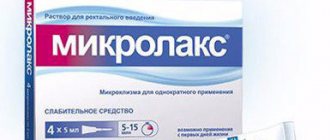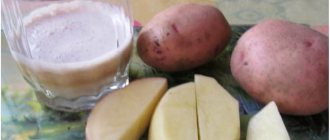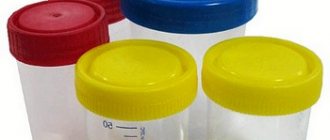What is fibrinolysis
Fibrinolysis is a process parallel to thrombus formation
Fibrinolysis is a process of thrombus reduction in the body with the participation of a special enzyme system of blood plasma, blood and tissue leukocytes, and drugs. Fibrinolysis is the reverse process of thrombus formation; it starts simultaneously with the onset of thrombus formation and serves to limit the size of the resulting blood clot. Fibrinolysis also prevents thrombus formation processes occurring chaotically in the body from leading to unnecessary blockage of blood vessels, suppressing them at a very early stage. In this case, it works as an “error correction” system for blood clotting.
The most prominent task of fibrinolysis is that it is involved in the restoration of organs and tissues after mechanical damage. After blood loss is stopped by the process of thrombus formation, the healing processes of the damaged areas begin. To restore these areas, normal blood supply is required, which means that fibrinolysis begins as soon as possible after the healing of the vascular wall - the gradual dissolution of the blood clot.
Fibrinolytic agents and preparations with dimexide
The use of dimexide as a fibrinolytic agent is due to its medicinal properties, the main ones being:
Capsicum ointment
Capsicum ointment is a combination preparation based on dimexide. The ointment is produced by JSC GRINDEX.
In general, it provides good therapeutic therapy, acting as an antimicrobial, anti-inflammatory, analgesic, fibrinolytic and antitumor agent.
It is used for arthralgia, myalgia and for warming up muscles before training (for athletes).
Capsicam ointment instructions for use, reviews, price and contraindications - fibrinolytic agent full review.
Ketorol gel
Ketorol gel is a combination drug based on ketorolac tromethamine.
Has analgesic and anti-inflammatory effects. Ketorol dimexide, which is part of the gel, increases the effect of ketorolac tromethamine and other components. Ketorol gel is produced by the Indian pharmaceutical company Doctor Reddy's Laboratories Ltd. In general, it provides good therapeutic therapy and acts as an analgesic and anti-inflammatory drug.
Ketorol gel instructions for use, reviews, price and contraindications - fibrinolytic agent full review.
Remisid gel
Remisid gel is a therapeutic agent with an anti-inflammatory effect. The main use of the gel is the treatment of local inflammatory processes of the musculoskeletal system. Dimexide included in the composition increases the effect of other components.
Remisid gel is produced by JSC Pharmaceutical Firm Darnitsa. In general, the gel provides good therapeutic therapy, acting as an antimicrobial, anti-inflammatory, analgesic, fibrinolytic and antitumor agent.
Remisid gel instructions for use, reviews, price and contraindications - fibrinolytic agent full review.
If you find an error, please select a piece of text and press Ctrl+Enter.
The information on the portal is exclusively encyclopedic in nature and is intended for specialists. Do not use these recommendations for self-medication.
All materials are protected by copyright. In case of copying an article (or part of it), an active link to the source is required.
Pathways for fibrinolysis activation
Dissolution of a blood clot in a vessel
Blood clots form in the body in response to changes in blood flow and damage to the vascular wall (internal activation pathway) and, as a consequence, damage to organs and tissues (external activation pathway). Similarly, there are two ways to activate fibrinolysis; they can occur in the body simultaneously.
The thrombus is formed by strands of fibrin protein, which is a mesh structure capable of trapping platelets, red blood cells and other blood elements in its cells. It is on the fibrin framework that the dense substance of the blood clot is built, which can block the lumen of the vessel and stop bleeding.
In order to then “remove” an unnecessary blood clot, the body requires a special set of solvents - the fibrinolytic blood system. It consists of the main enzyme (plasmin), which is capable of “cutting” dense fibrin filaments, its precursor (plasminogen) and conversion activating substances.
Plasminogen is constantly present in the blood along with some activator substances, but the massive conversion of plasminogen molecules into plasmin requires a larger than usual amount of such substances (internal pathway) or the appearance of other activators released from tissues (extrinsic pathway).
External path
The extrinsic pathway is activated when tissues and organs are injured
Fibrinolysis is activated via the external pathway with the help of substances contained in the cells of the vascular wall, tissues and some blood cells. These substances primarily include tissue plasminogen activator and urokinase.
The external pathway is involved when organs and tissues are damaged; activators quickly enter the blood from decayed cells, limiting the blood coagulation system and the formation of a blood clot. In a healthy body, a blood clot immediately forms attached to the vascular wall; thrombus formation is limited to the site of injury due to plasmin.
Inner path
Balance between the processes of thrombus formation and fibrinolysis
This pathway of fibrinolysis activation is divided into Hageman factor-dependent and Hageman factor-independent. PC (Hageman factor) is a component of two systems simultaneously: thrombus formation and fibrinolysis, due to which the internal pathway dependent on it is activated very quickly, from the very beginning of blood coagulation.
In the PC-dependent intrinsic pathway, plasminogen is converted into an active form by the same substance that helps synthesize fibrin filaments. Thus, at the site of thrombus formation there is immediately a substance that can limit its size. When fibrin monomers are cross-linked into filaments, “scraps” are inevitably formed that could clog other vessels, but PC (as well as kallikrein and BM-kininogen) promotes the formation of plasmin precisely at the site of this process. Plasmin again “cuts” unnecessary pieces of fibrin threads into short D-dimers.
The PC-independent activation pathway occurs thanks to other substances (kallikrein and BM-kininogen), which trigger the conversion of plasminogen to plasmin in the absence of PC. Thus, “scraps” of threads can be removed not only during the process of thrombus formation, but also much later.
Fibrinogen during pregnancy
During the first trimester of pregnancy, fibrinogen should normally be approximately 2.98 g/l. This is somewhat below the norm, but the state of toxicosis of the pregnant woman is always taken into account. Second trimester - fibrinogen begins to rise, and, as a rule, is 3.1 g/l. And the third trimester is characterized by a significant increase in this protein - from 4.95 to 6 g/l.
High levels of fibrinogen and activation of the coagulation system lead to:
- Infertility;
- Premature abruption of a normally located placenta;
- Thrombosis of umbilical cord vessels;
- Gestozam;
- Spontaneous abortions in the early stages;
- Non-developing pregnancies;
- Premature birth;
- Thrombosis and thrombophlebitis in the mother.
In order to implement appropriate therapy in a timely manner, doctors prescribe a coagulogram several times throughout the entire pregnancy. The first analysis, carried out at the initial stage, gives an idea of the initial level of fibrinogen, and performed before childbirth shows whether there is a danger of developing thrombosis and whether the body is ready for childbirth.
Inhibition of fibrinolysis
Fibrinolysis may be inhibited in autoimmune diseases
A decrease in the activity of the fibrinolytic system is most often associated with a lack of the main activating substances that are normally constantly present in the blood: tissue plasminogen activator (tPA) and urokinase. The production of these substances decreases when:
- Pregnancy;
- Taking progesterone and its analogues;
- Diseases of the cardiovascular system (arterial hypertension, angina pectoris, atherosclerosis);
- Autoimmune diseases (rheumatoid arthritis, antiphospholipid syndrome).
Malignant tumors are capable of producing substances that reduce the activity of tPA and urokinase.
Fibrinogen test
During the normal process of pregnancy, it is recommended to take tests for protein levels three times per trimester. Pregnancy with complications requires additional deadlines - cases of uncontrolled abortion with a history of heart attack. The gynecologist who is managing the pregnancy will refer you for analysis. He also prescribes a detailed coagulogram that analyzes the entire coagulation system.
This is a recommended procedure, which can be abandoned, but it is better to exclude dangerous diseases of the mother and child and prevent the development of complications.
Standard timing for a coagulogram based on pregnancy by week:
- from 9 to 11 weeks;
- from 22 to 24 weeks;
- from 30 to 36 weeks.
Before the procedure, you should prepare: take the test on an empty stomach; in the morning before the procedure, only drinking water is allowed. Blood is drawn through the cubital vein, after which you should continue your normal daily routine and activities.
Fibrinogen levels during pregnancy will vary by trimester.
For the first trimester, the norm of fibrinogen in pregnant women is the table:
| Weeks of pregnancy | Indicator (g per liter) |
| 5-8 | from 2 to 4.5 |
| 9-10 | from 2.2 to 4.6 |
| 11-13 | from 2.5 to 4.7 |
During pregnancy in the first trimester, indicators are low. In the early stages, childbirth does not occur.
In the second trimester, fibrinogen norms during pregnancy:
| Weeks of pregnancy | Indicator (g per liter) |
| 14-18 | from 3.0 to 5.6 |
| 19-22 | from 3.3 to 6.1 |
| 23-26 | from 3.5 to 6.8 |
The 2nd trimester is characterized by an increase in the indicator.
For the 3rd trimester, the following are considered normal indicators:
| Weeks of pregnancy | Indicator (g per liter) |
| 27-31 | from 3.8 to 6.9 |
| 32-36 | from 4 to 7 |
| 37-42 | from 4.1 to 7 |
In the 3rd trimester, the indicator increases more strongly.
In the blood during pregnancy with 2 or more fetuses, a protein value of up to 7.2-7.5 is normal.
Factors regulating fibrinolysis
Excess of fibrinolysis inhibitors is observed in kidney diseases
The activity of the fibrinolytic blood system is regulated by the body using special inhibitor substances. These include PAI-1, PAI-2, antiplasmin and a number of other substances that are rarely determined in medical laboratories due to their low diagnostic value.
An excess of fibrinolysis inhibitors is observed when:
- Systemic vasculitis;
- DIC syndrome;
- Autoimmune diseases;
- Kidney diseases;
- Treatment with streptokinase.
Inhibition of fibrinolysis leads to excessive thrombus formation, which can cause blockage of healthy vessels, damage to organs and tissues due to a lack of oxygen supplied by the blood.











